#egyptian history
Explore tagged Tumblr posts
Text
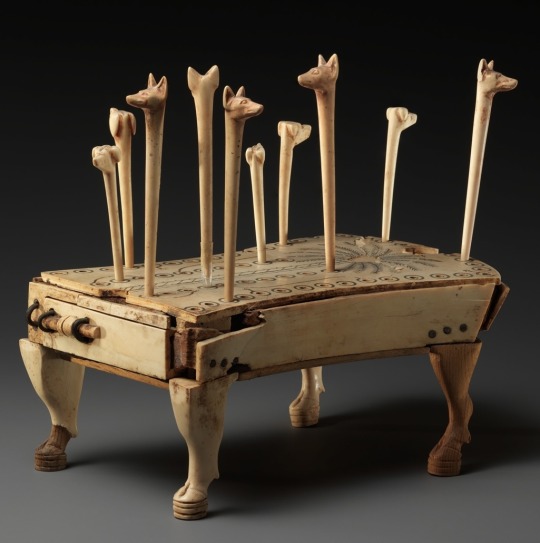
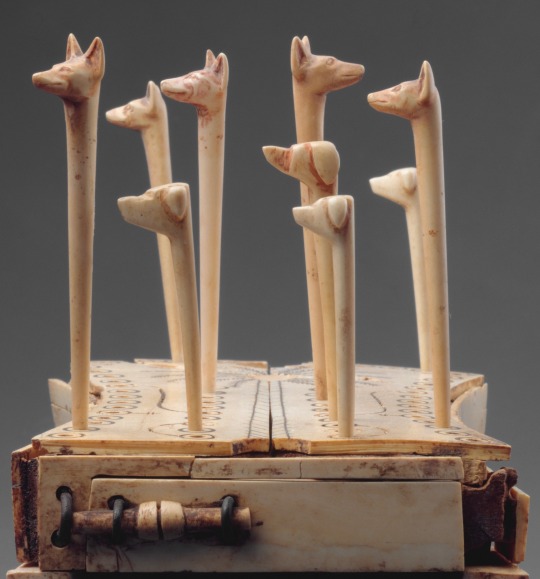
Egyptian
Game of Hounds and Jackals
Middle Kingdom, ca. 1814-1805 B.C.E.
#egyptian art#ancient egypt#ancient art#hounds and jackals#ancient history#artifact#antiquities#ancient people#ancient culture#egyptian history#egyptian culture#board games#chess#aesthetic#beauty#art history#aesthetictumblr#tumblraesthetic#tumblrpic#tumblrpictures#tumblr art#tumblrstyle#artists on tumblr#ancient artifacts
6K notes
·
View notes
Text

Gold swivel ring featuring an amethyst frog, from the New Kingdom period of Egypt, dating between 1550-1229 BC.
#new kingdom#ancient egypt#egyptology#egyptian#egypt#frog art#frog#amethyst#purple and gold#gold jewelry#gold rings#egyptian history#egyptian archaeology#egyptian art#antique#antiquities#toya's tales#style#toyastales#toyas tales#art#ring#antique jewelry#world history#artifact#art history#swivel ring#amphibians#fashion#accessories
3K notes
·
View notes
Text

'euthenia in a garden,' wall hanging, linen and tempera paint, egypt c. 30 b.c.
1K notes
·
View notes
Text
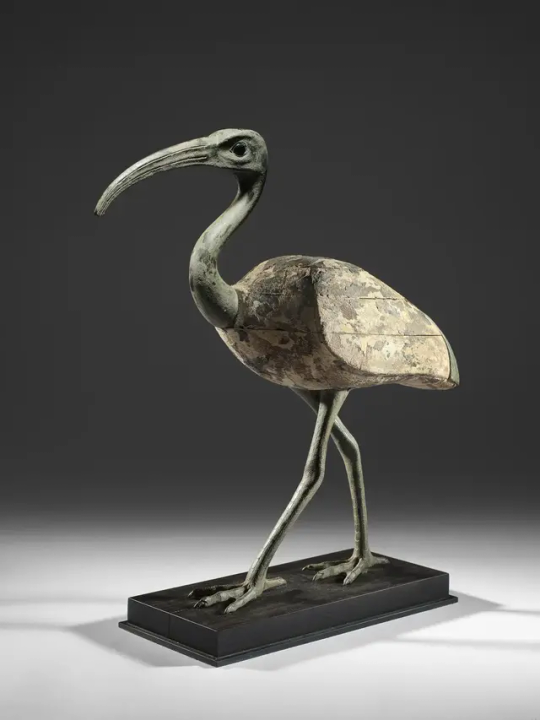
An Egyptian almost life-size bronze and wood striding ibis Late Period, circa 664-332 B.C.
#An Egyptian almost life-size bronze and wood striding ibis#Late Period#circa 664-332 B.C.#bronze#wood#ancient artifacts#archeology#archeolgst#history#history news#ancient history#ancient culture#ancient civilizations#ancient egypt#egyptian history#egyptian art#ancient art#art history
3K notes
·
View notes
Text


Akhenaten and Nefertiti
#egyptian history#ancient egypt#egyptian#egyptian pharaoh#akhenaten#nefertiti#ancient history#history#art#ancient sculpture#ancient civilizations
579 notes
·
View notes
Text


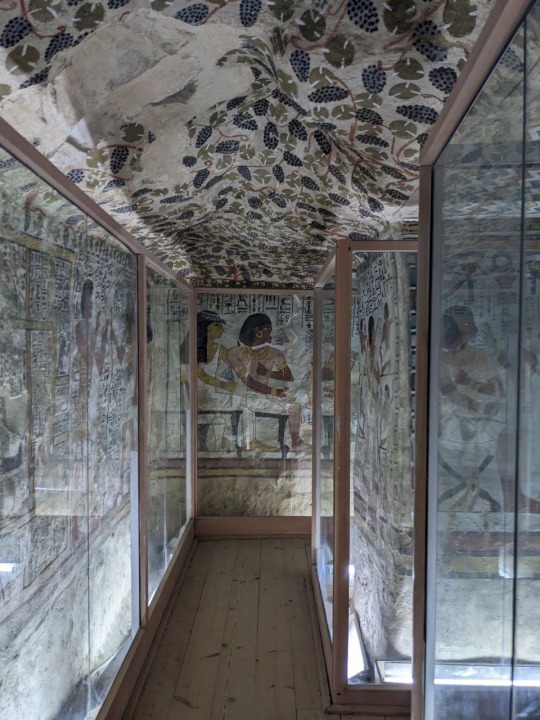
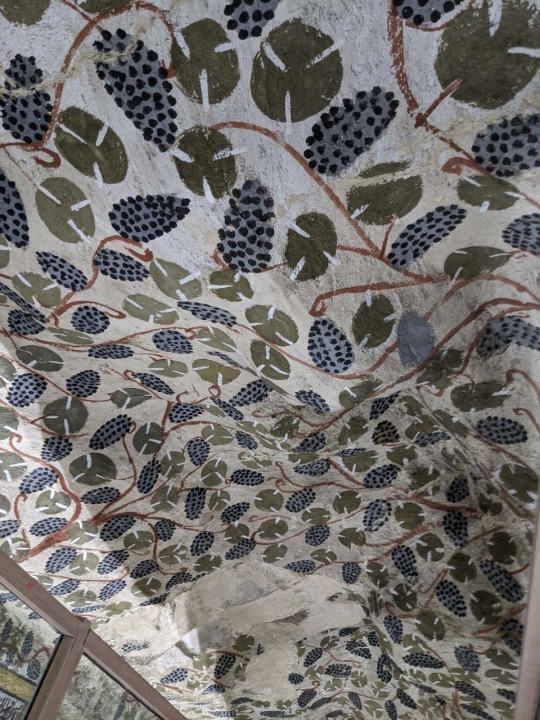


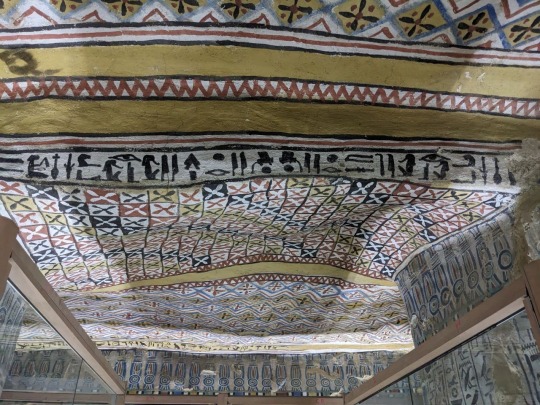
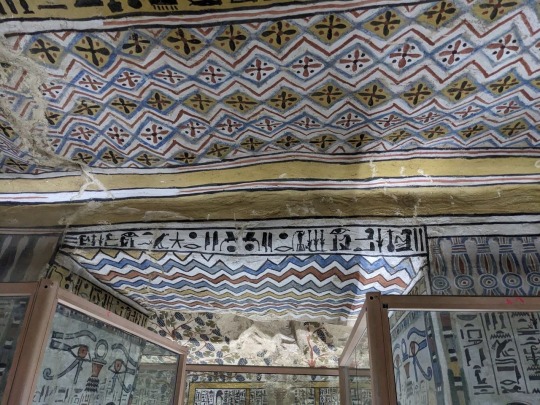
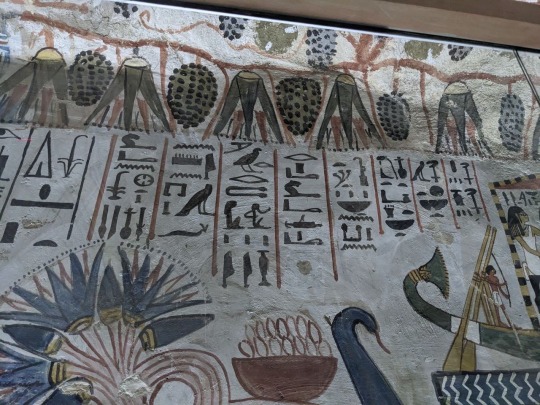
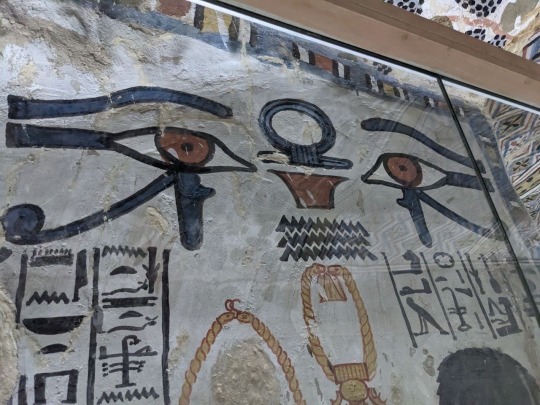
Ceiling and imagery of the Tomb of the Vineyards, burial of Sennefer, Mayor of the Southern City, Thebes, during the 18th dynasty of Egypt.
Photos taken by me, August 2023
It’s hard to tell which way is up and down when walking through the tunnel leading from the surface into the tomb. Before entering the main chamber there is a small antechamber whose ceiling is quite low, and then a shallow arch which leads to the main room depicted in the above photographs. Both chambers contain a good deal of paintings, however the main chamber holds the most numerous and well preserved paintings, of course. Besides the ceiling, everything is encased in glass.
#ancient egypt#egyptian mythology#egyptian hieroglyphs#egyptian art#ancient history#egyptian gods#egyptology#hieroglyphs#archaeology#egyptian history#egypt
2K notes
·
View notes
Text
Back to the past| Dark! Tutankhamun x Modern! Reader
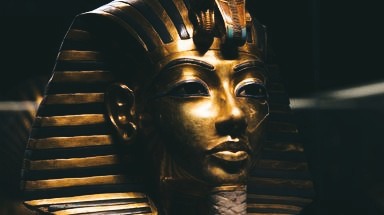
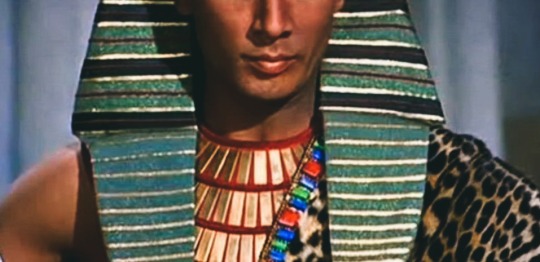

After discovering your fiance's cheating, you didn't expect to make a car accident and get transported to the past.
And not only that but meet Pharaoh Tutankhamun.
Who becomes fiercely protective of you, monitoring their every move to ensure their safety.
He might even go to extreme lengths to eliminate perceived threats.
He declares you in front of others as his wife and royal Possession Tutankhamun insists on having yoy close at all times, whether it's attending royal events together or keeping them within the palace walls.
As he Becomes more possessive as time goes on, Tutankhamun might isolate you from others, limiting your interactions to maintain control over your social circle.
Any attention you receive from none other than him, triggers Tutankhamun's jealousy, leading to intense reactions that range from subtle displeasure to more overt displays.
The young pharaoh gives you symbolic tokens of his love, like unique jewelry or clothing, to strength your connection to him.
Expensive gifts are the way to the woman's heart.
He even built a tomb for you beside his own.
"What do you think of your tomb, my love? I had everything made out of gold"
Like the delusional pharaoh really wants you to be with him in the after life.
He would pretend to be sick sometimes because he enjoys how you worry over him.
Even though you are aware of his tendencies, but you have to bear with it.
I mean what choice do you have?
It's either the streets or be the queen of one of the most famous Egyptian pharaohs.
#tw: toxic relationships#reader insert#Yandere pharaoh#tutankhamun#Tutankhamun x reader#History#egyptian history
1K notes
·
View notes
Text
Let's Talk About Drolta's Historical Context

Okay, anyone who has been around like fifteen Months ago, when the first season of Castlevania Nocturne released knows the drill. Let's do some history.
I will talk a bit about some historical context of the new season and I am going to start with Drolta, because oh boy, she definitely is an interesting character in this context. After all we learn her backstory this season - and it is actually really interesting.
I am super sorry, right now I cannot do proper screenshots from the flashbacks. So bear with me.
Spoilers for season 2, obviously!
The first scene we see with Drolta is her at a temple of Sekhmet in Southern Egypt in what we get told is 1199 CE. Now, this is interesting. Because this is far, far after the end of anything recognizable as "Ancient Egypt". In 1199 CE what we now know as Egypt was under the control of the Ayyubid dynasty. A Muslim government.
Now, Egypt in terms of religion was a bit of a battleground in the early middle ages.
There is one thing y'all need to understand about the Ancient Egyptian religion. It has a lot of staying power. I have heard so many Egyptologists joke about this. Egypt was colonized so often - and while most other countries got then forced into another religion under the Romans and Greeks, somehow everyone in Egypt during Ancient Times went just and adopted the Egyptian religion. Something that is quite interesting, because Egyptian religion - in terms of anthropology - is an older religion that bears a lot of hallmarks of old religions. I talked about this before: From what we can say, first human religions worshipped animal gods, that then became some sort of chimera, that took up more and more human attributes, before the gods became humanoid in their appearance. And if you know anything about Egyptian religion, than it will be probably that the gods have all their animal aspects, dating it as a bit earlier than the Greek and Roman religion - even though some of the oldest Greek gods also have still their animal aspects (like Pan).
Now, due to the later Roman/Byzantine Empire Christianizing - and Egypt being part of it - Egypt was Christianized as well. And this is where we talk about this one historical figure that somehow haunts me in all my creative persuits: Emperor Theodosius I. He was a hardliner for Christianity. Until he came into power, Christianity was not exactly chill with the pagan religions, but accepted them somewhat. And then Theodosius enacted a decree that set fire to all the pagan temples in the Empire. And they burned down a lot of temples to the old gods. That was the Roman gods, the Greek gods, the Egyptian gods, and some pagan gods of a variety of smaller religions, like the Canaanites and such.
However, again: The Egyptian religion had a hell lot of staying power. So yes, people would often "convert" to Christianity at the point of a sword but secretly still pray to the old gods still.
Between the 7th and the 8th century, Egypt was taken over by the Muslims, and a lot of people converted to Islam. However, as I spoke about before: Muslims were always a lot more chill about other religions. So while people praying to other gods were higher taxed, it was generally just allowed.
In 1199 - as I said - Egypt was under the control of the Ayyubid Dynasty, with the majority of people living there being Muslim.
Realistically speaking, we do not have any historical evidence for any acitve temples to any of the Egyptian deities for after the 9th century, from all I know. While some aspects of the Ancient Egyptian religion were generally were incorporated into Muslim tradition - and still are to this day (like some Ancient holidays are still celebrated in Egypt to this day!) - but from all we know there was no active temple worship.
However, realistically speaking, obviously none of the temples held the actual mummy of an actual god. lol By the time Egypt Islamized, most of the actual mummies of even kings were long forgotten and burried under the sands of the deserts and people practices burial of the dead.
If there had actually been an active temple, yes. It is absolutely possible that this temple would have been attacked and plundered multiple times. And of course anyone still worshipping the old gods would absolutely know that their religion was kinda doomed to disappear. They would be a small holdout. And in this case there is of course the additional aspect of knowing that the goddess one prays to is already physically dead. (Fuck, I need to talk about the worldbuilding in this. I hope I will around it - because I am out of town over the weekend. Argh.)
The attackers we mainly see in the temple are just random bandits. However, the vampire who comes later, definitely wears a specific armor - though this is where I still need to do some research. While I recognize some aspects of the armor, I could not properly place it - because it is definitely a bit too early for Ottomans. (My first thought was Ottoman because of the helmet, but yeah, the Ottoman empire is 250 years out at this point.) The slightly pointed helmet was also used in some part of the Byzantine army, but again, this definitely is something I will look more into.
From there on, of course, her story gets more dominated not by the historical context, but by the fictional worldbuilding.
Something that is however interesting is, that she is of course a member of a cult - and that is by the historical definition of the word, not the modern one.
See, historically speaking cult members where people who among a religion praying to a pantheon served just one deity. In Drolta's case of course this deity is Sekhmet, whom she revears above all the other gods. So much so, that she completely goes against the central cour of the religion at large - which was a religion in which the highest god was a sun god! Ra!
I think in general Drolta goes very strongly back there to something that very much is at the heart of Castlevania's vampire mythology: The way how vampires remain in that world that is changing around them, because the humans in this world are dying, and new humans have new ideas. The world changes - but the vampires are frozen in time.
She holds onto her old religion, that was technically already "dead" when she was born for the first time, and that just dies out further as she cannot die, because she is now a vampire.
In her pursuit of the will of a deity, whose will she thinks she knows, she is ironically very close to Isaac - though other than him, she canot find it in herself to turn it around. Especially after going down that wrong path for hundreds of years.
The interesting part of this though is, that it very much reframes Erszebeth from someone who came in as a colonizer to take the blood - in comparison to someone upon whom it was trust.
#castlevania#castlevania netflix#castlevania nocturne#ancient egypt#egyptian history#history#medieval history#medieval islam#history of islam#anthropology#castlevania drolta#drolta tzuentes
273 notes
·
View notes
Text

A Hittite cuneiform tablet declaring the first surviving recorded peace treaty in history between Ramesses II and Ḫattušili III respectivly rulers of the New Kingdom of Egypt and the empire of the Hittites. The tablet is written in the Hittite language and their cuneiform.
This is one of three known relics of the treaty. Also known as The Treaty of Kadesh.
Circa 1259 BC
The tabelt is displayed at the Museum of the Ancient Orient in Turkey
#egyptology#ancient civilizations#ancient world#antiquity#archeology#ancient history#egyptian history#ancient egypt#hittite empire#hittite#archaeology#artifacts#cuneiform#anatolia#mesopotamia#artifact#ancient artifacts
85 notes
·
View notes
Text
Let's build a Ptolemaic Pharaoh!
Sadly, I ran out of room and had to cut the options about boyfriends, mistresses, and incest.
Thanks to @allbeendonebefore, @ahallister, and @en-theos for the feedback and inspiration!
372 notes
·
View notes
Text


Egyptian
Sphinx of Amenhotep IlI, (possibly from a Model of a Temple)
New Kingdom, ca. 1390-1352 B.C.E.
#egypt#egyptian art#egyptian history#sphinx#ancient art#ancient egypt#ancient history#ancient people#artifacts#antiquities#ancient culture#ancient aesthetic#aesthetic#beauty#statue#art history#aesthetictumblr#tumblraesthetic#tumblrpic#tumblrpictures#tumblr art#tumblrstyle#artists on tumblr
1K notes
·
View notes
Text

A small statue of Tutankhamun (1341-1323 BC), of gilded wood, depicting Pharoah wearing red crown of Lower Egypt, standing in a papyrus boat made of green painted wood, and gilded, where papyrus details are supposed to appear.
Egyptian Museum, Cairo
#tutankhamun#king tut#pharoah#egyptology#egyptian#ancient egypt#egypt#cairoegypt#cairo#toya's tales#toyastales#toyas tales#art#antiquities#egyptian archaeology#egyptian art#november#fall#Lower Egypt#papyrus#egyptian history#egyptian culture#egyptian king#egyptian pharaoh#world history#Gilded
226 notes
·
View notes
Text

wedjat sacred eye ring, dark violet and white faience, egypt c. 1390-1353 b.c.
702 notes
·
View notes
Text

A set of four Egyptian limestone canopic jars Third Intermediate Period, circa 1069-664 B.C.
#A set of four Egyptian limestone canopic jars#Third Intermediate Period#Circa 1069-664 B.C.#grave goods#ancient artifacts#archeology#history#history news#ancient history#ancient culture#ancient civilizations#ancient Egypt#egyptian history#egyptian mythology#egyptian art#ancient art
715 notes
·
View notes
Text

Nefertem x Brahma supremacy 🗿🪷🪷🪷
#ancient egypt#ancient india#egyptian history#egyptian mythology#brahma#egyptian gods#nefertem#nefertum#ancient cultures#ancient history#ancient civilizations#hindu mythology#hindu myths#hindu gods#hindublr#desiblr#desi tumblr#desi tag#desiposting#desi side of tumblr
566 notes
·
View notes